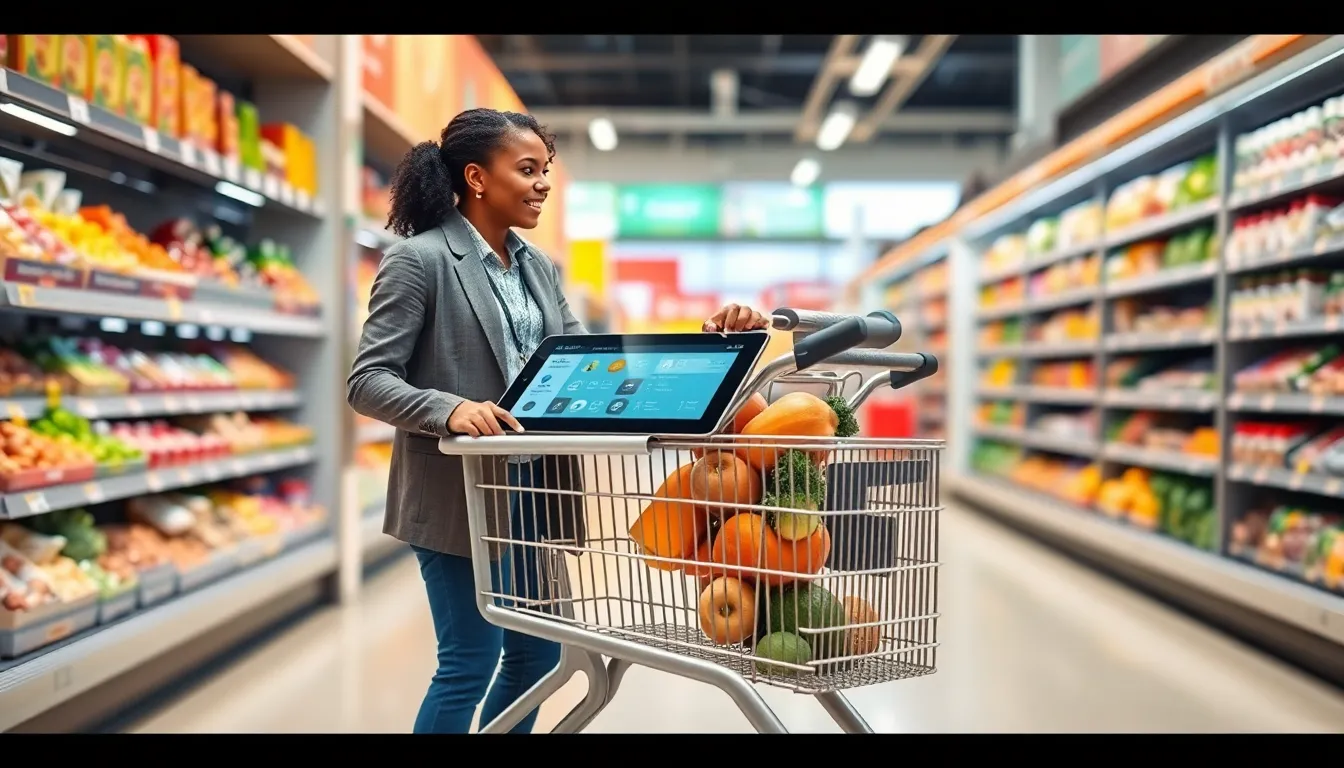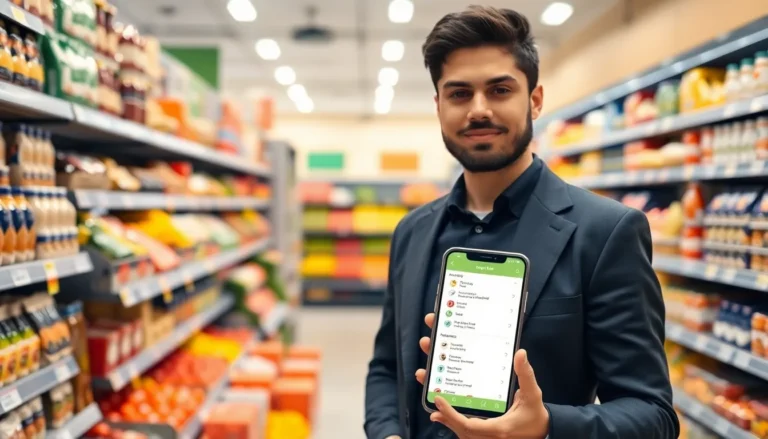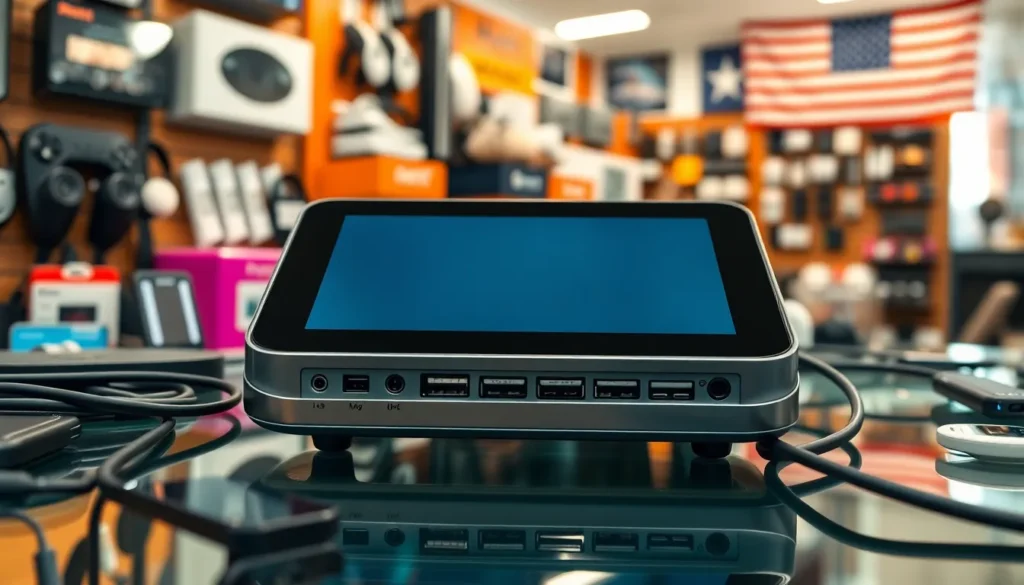Imagine trotting down grocery store aisles, your shopping cart not just holding your goodies, but also whispering sweet nothings about sales, suggesting recipes, and helping you stay on budget. Sounds dreamy, right? This isn’t science fiction. We’re living in the age of smart shopping carts, your new best friend in retail. This article dives deep into this technological marvel, exploring how it’s changing the shopping game one beep at a time. Get ready to transform your shopping trips into a smooth, high-tech journey.
Table of Contents
ToggleWhat Is a Smart Shopping Cart?

Smart shopping carts are not your average wheeled baskets. Think of them as hybrid warriors that blend traditional shopping cart functionality with cutting-edge technology. These carts often come equipped with features like touchscreens, barcode scanners, and even weight sensors. They help shoppers easily navigate stores while tracking items in real-time. This technology not only assists with purchases but can also optimize the shopping experience by providing information on items, such as ingredients or nutritional data, with just a swipe.
Users interact with smart carts via an intuitive interface supported by mobile apps, enhancing engagement and reducing time spent hunting down items. Essentially, these carts serve as personal assistants on wheels, designed to streamline shopping and reduce the headache of retail.
But why stop at convenience? Smart carts also collect valuable data, giving retailers insights into shopping habits and trends. Sounds like a win-win, doesn’t it?
Key Features of Smart Shopping Carts
Equipped with features that make shopping enjoyable and efficient, smart shopping carts can surprise even the most seasoned of shoppers. Here are some standout functionalities:
Touchscreen Interface
The centerpiece of many smart carts, this display lets users browse store layouts, locate items, and check prices. The user-friendly interface provides a seamless experience, ensuring shoppers spend less time searching and more time adding products.
Barcode Scanning
Scanning items directly as you shop transforms the checkout experience. No more waiting in long lines: users can keep track of expenses and easily spot promotions and discounts.
Weight Sensors
These sensors ensure that the cart keeps an accurate count of all items, adjusting totals as items are added or removed. This accuracy is essential for staying on budget.
Navigation Assistance
Some smart carts have GPS-like features that guide users through complex store layouts. This means no more wandering aimlessly in search of that elusive brand of almond butter.
Integration with Loyalty Programs
Shoppers can link their smart carts to loyalty programs, making it easier to redeem points and apply discounts automatically. Who doesn’t love a sweet deal?
These integrated features elevate the shopping experience, making it more engaging and less cumbersome.
The Technology Behind Smart Shopping Carts
But what exactly powers these high-tech carts?
Typically, a smart shopping cart incorporates a blend of hardware and software solutions. The integration of IoT (Internet of Things) technology plays a significant role, connecting the cart to the store’s system. Let’s jump into the elements:
Sensors and Cameras
Weight sensors and cameras help monitor what’s inside the cart. With a simple glance or a scan, the cart tracks what’s been added or removed, ensuring the checkout process flows seamlessly.
Connectivity
Most smart carts connect through Bluetooth or Wi-Fi, allowing them to sync with store networks and shoppers’ smartphones. This connectivity not only makes product information accessible but also updates users on sales or special offers in real-time.
Analytics Software
The backend of smart carts relies heavily on powerful analytics software. Retailers can gather insights from shopper behavior, effectively tailoring their marketing strategies while enhancing inventory management.
Mobile App Integration
Smart shopping carts usually come with a companion app that shoppers can download. Features often include shopping lists, personalized recommendations, and more, a handy tool for tech-savvy consumers.
This combination of features makes smart carts work smoothly, creating a delightful shopping experience.
Benefits of Using Smart Shopping Carts
The ripple effects of adopting smart shopping carts extend across various facets of consumer experience and retail efficiency. Here are some significant advantages:
Enhanced User Experience
Users enjoy personalized shopping trips as carts provide tailored recommendations based on their preferences, making the entire outing enjoyable.
Time-Saving
Smart carts expedite the shopping process. With navigational support and real-time price checks, customers spend less time in-store.
Cost Efficiency
Tracking expenses as purchases are made helps prevent overspending. Forget guessing how much you’ve spent: these carts let shoppers maintain control over their budgets.
Data-Driven Insights for Retailers
Gathering data from shopper interactions, retailers can fine-tune their inventories. Knowing which products fly off the shelves helps them stock up accordingly.
Environmentally Friendly
Smart carts often promote energy-efficient practices. From digitally sharing coupons to reducing paper waste, these carts help minimize the retail sector’s carbon footprint.
The list goes on, illustrating that integrating smart technology into retail isn’t just about making life easier for shoppers: it’s about creating a sustainable future for businesses.
Challenges and Considerations
Even though the many benefits, the journey to integrate smart shopping carts isn’t all smooth sailing. Several challenges pose obstacles:
User Adoption
Not everyone is tech-savvy, especially older customers who may prefer traditional carts. Retailers must consider user training and support to ease the transition.
Cost of Implementation
For many retailers, the initial investment in smart cart technology and maintenance can be substantial. Budget constraints might delay adoption, especially for smaller businesses.
Security Concerns
With the data collected from shoppers, ensuring cybersecurity becomes essential. Retailers must navigate privacy issues rigorously to shield customer information from potential breaches.
Technology Limitations
Not every store layout suits smart carts. A smaller shop may not benefit from the extensive features these carts offer, raising questions about their practicality.
These challenges must be addressed to ensure that the evolution of the retail landscape is both efficient and inclusive.
Future Trends in Smart Shopping Carts
As cities evolve and technology progresses, so too does the world of retail. Here are some trends to watch for about smart shopping carts:
Automation and AI Integration
Expect smarter algorithms that personalize offers even further. Artificial intelligence could analyze shopping trends, leading to hyper-targeted promotions.
Increased Use of Augmented Reality
Imagine a future where shoppers can use AR through their smart carts to visualize products in their homes before buying.
Self-Checkout Capabilities
Smart carts may trend towards becoming fully autonomous, allowing users to fast-track self-checkout. Who needs long lines anyway?
Health and Wellness Features
With growing health consciousness, smart shopping carts might provide data on nutritional information or suggest healthier alternatives based on personal health goals.
Wider Accessibility
Expect to see smart carts in all types and sizes of retail environments, democratizing access to technology for both consumers and retailers alike.
These trends hint that the future of shopping might just be a delightful blend of technology and personal engagement.









